Archaeological Records of Eastern Europe (AREE) is a special publishing program. Its underlying concept is not just about publication of archaeological records, but also about drawing attention to successful and large-scale source studies, such research and interpretations that crown significant changes in our concepts about the past. Stratum Publishing House proceeds from the fact that controversial, fresh ideas and non-standard approaches to interpretation of cultural processes, including in the macroregion of Eastern Europe, are the best ground for integration of the ongoing research efforts, elimination of administrative and inter-state borders and achievement of a true internationalization of our science. And this is exactly a kind of innovative and creative environment that is required not only for archaeology, but also for the entire humanist community from the Balaton, Tatra and Carpathian Mountains to the Northern Caucasus and the Urals.
PUBLISHED IN THIS SERIES:
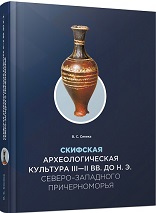
V.S. Sinica. "Scythian Archaeological Culture of the 3 rd—2 nd Centuries BC in North-West Black Sea Region"
Editor-in-Charge: Anatoliy R. Kantorovich
2023 year, 489 pages, ISBN: 978-9975-3621-2-2, E-ISBN: 978-9975-3621-3-9, DOI: https://doi.org/10.55086/sparee23sac32cnwbsr
The monograph addresses the funerary rite and material culture of the Scythians in the North-Western Black Sea Region in the 3 rd—2 nd centuries BC. Special focus is on synchronous sites, known as “strange complexes’ or “hoards”. The monograph also addresses a number of important issues of Scythian history in the North Black Sea Region.
For archaeologists, historians, university lecturers and students, and anyone interested in the early history of the region.
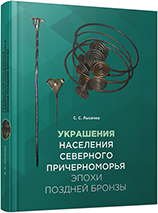
S.S. Lysenko. "Adornments of the Late Bronze Age Population in the North Black Sea Region"
Editor-in-Charge: Sergei D. Lysenko
2021 year, 688 pages, ISBN: 978-9975-3343-9-6, E-ISBN: 978-5-88554-034-6, DOI: https://doi.org/10.55086/sparee21albapnbsr
The monograph is the first study to summarize information about almost all Late Bronze Age adornments originating from the sites in the North Black Sea region from the turn of the third — second — early first millennium BC. The author offers a typology of adornments; their mutual occurrence in closed complexes and their location in graves are considered. The study employed data of metallographic research and experimental study with the use of replicas of some types of adornments. Two main arrays of sites were identified based on the presence of adornments in graves and their mutual occurrence: the Western (“Right Bank”) array and the Eastern (“Left Bank”) array. The conclusions drawn on the basis of the grave goods were confirmed by the analysis of objects from hoards, settlements and stray finds, many types of which are not known in graves. The Western array includes sites of various groups of the Trzciniec cultural circle, the Noa-Sabatinovka cultural circle and the Belozerka culture. The Eastern array includes sites of the Babino cultural circle, Timber Graves and Post-Timber Graves cultures.
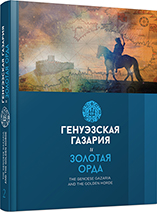
Collection af articles "The Genoese Gazaria and the Golden Horde". Vol 2
Edited by Sergei Bocharov and Ayrat Sitdikov
2019 year, 824 pages, ISBN 978-9975-3198-8-1, e-ISBN 978-9975-3343-0-3
The second volume of academic papers “The Genoese Gazaria and the Golden Horde” is dedicated to the memory of an outstanding scholar, archaeologist, historian and numismatic, founder of the Russian School of Golden Horde archaeology, Professor of Moscow State University G. A. Fedorov-Davydov.
By this volume, we wanted to address a few key issues raised in historical and archaeological studies of Byzantium, Genoese Gazaria and Golden Horde. Issue number one: we want to demonstrate possibilities for integration of different types of sources while studying broad historical problems through archaeological methods; number two — searching new ways to elucidation and understanding of different narratives of Eurasian medieval history through material culture; and number three — identification of specific features in material manifestations of vital activities by states, as a whole, and by their local regions, in particular.
The articles collected in the second volume mainly address historical, geographical and archaeological studies of the vast Mongol Empire, which functioned across Eurasia in 12th—14th centuries. Having appeared in the 12th century, it then got divided into a number of new states, which, in their turn, were to cardinally change the political map of the Old World.
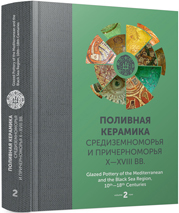
Collection af articles "Glazed Pottery of the Mediterranean and the Black Sea Region, 10th–18th Centuries"
Edited by Sergei Bocharov, Véronique François, Ayrat Sitdikov
2017 year, 845 pages, ISBN 978-9975-4269-0-9, e-ISBN 978-9975-4269-1-6
The second volume of this specialized continued collection of research papers “Glazed Pottery of the Mediterranean and the Black Sea Region, 10th – 18th Centuries” contains studies of mass archaeological materials — glazed pottery — from a vast region encompassing countries from the Mediterranean, Black Sea, Eastern Europe, Central Asia, Far East and Eurasian steppes, dated by the High and Late Middle Ages. The goal of this continued edition is to attract the attention of the medievalists to glazed pottery and, particularly, to introduce earlier unknown archaeological complexes with glazed pottery and results of various physical-chemical studies of ceramic clays and glazes for scientific discussion. The volume includes contributions from Azerbaijan, Belarus, Bulgaria, France, Greece, Italy, Lebanon, Russia, Romania, Serbia, Spain, Turkey, Ukraine, USA, Uzbekistan and is meant for specialists in history, archaeology, ceramic studies, ethnography, museum studies, history students and all those interested in medieval material culture.
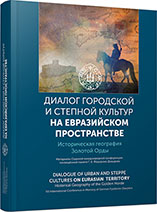
Proceedings of the VII International Scientific Conference in memoriam German Fyodorov-Davydov. "Dialogue of Urban and Steppe Cultures in the Eurasian Space. Historical Geography of the Golden Horde"
Edited by Sergei Bocharov and Ayrat Sitdikov
2016 year, 310 pages, ISBN: 978-9975-3148-3-1, E-ISBN: 978-9975-3148-4-8
The VII International Conference in memoriam German Fyodorov-Davydov (November 8—12, Yalta, Crimea) will be attended by 95 researchers from 6 countries with reports covering the entire territory of the Mongol Empire from the Pacific Ocean to the Danube. The seven panels of the scientific forum — the Far East; Siberia and the Trans-Baikal area; Central Asia; the Middle Volga; the Lower Volga; North Caucasus and Transcaucasia; the Northern Black Sea area, and the Crimea — are based on the geographical principle, so as to clearly illustrate the extension of the Mongol Empire from East to West, as well as the diversity of archaeological studies of the Golden Horde.
The proposed publication is aimed at elucidating the issues related to the study of historical geography of the regions dominated by the Golden Horde and other states formed by the Mongols, and territories adjacent to them, as well as their role and place in the medieval world. An important role in the framework of this scientifi c publication is played by the materials associated with the multidisciplinary approach and scientific methods of archaeological research in order to determine major trade routes and commodity flows through the Golden Horde territory, the extent of home handicraft and agricultural products distribution, life support systems within the huge medieval cities, and involvement of the steppe nomadic sub culture in the processes mentioned above. In line with these objectives, materials on historical topography of separate archaeological sites in the territorial and chronological framework under study are offered for a scientific discussion.
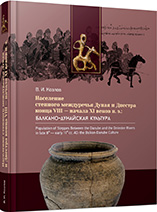
V.I. Kozlov. "Population of the Danube-Dniester Steppes in Late 8th – Early 11th cc.: Balkan-Danube Culture"
Editor-in-Charge: N.D. Russev
2015 year, 323 pages, ISBN: 978-9975-4482-6-0, E-ISBN: 978-9975-4482-5-3.
The book is an overview of the Balkan-Danube archaeological culture in the Danube-Dniester steppes, whose bearers are directly connected with the history of the early Medieval Bulgarian state. A special feature of the two arrays of settlements grouped in the Lower Dniester area and close to the Danube delta is their mixed nature combining in itself typical elements of the pre-Bulgarians, Southern and Eastern Slavs. This feature is reflected in construction and design of their dwellings, household items and assortment of clay pottery, whose development followed the way of integration, which is typical for a settled farming economy on the main territories of Bulgaria.
The author suggests a model of ethno-cultural development of the Balkan-Danube Culture. During the first period (late 8th – mid 9th cc.), population from the north-eastern districts of Bulgaria and Dobrogea went to explore the lands in the Lower Danube area, and later went colonizing the Dniester area. The second period (second half of 9th – first half of 10th cc.) was marked by the dawn of the Balkan-Danube Culture, with emergence of a well developed system of settlements. The newcomers from the Danube area interacted in the Dniester area with the Eastern Slavs, representatives of the Luka-Raykovetskaia Culture. During the third period (mid 10th – early 11th cc.), the region was involved in unification of material culture and formation of a single Slavic-Bulgarian ethnicity.
Although this publication of a corpus of archaeological materials and historical reconstructions is meant for specialists, it has big educational value for wider groups of readers.
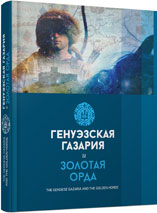 Collection af articles "The Genoese Gazaria and the Golden Horde"
Collection af articles "The Genoese Gazaria and the Golden Horde"
Edited by Sergei Bocharov and Ayrat Sitdikov
2015 year, 711 pages, ISBN 978-9975-4272-7-2, e-ISBN 978-9975-4272-8-9
The articles in this volume titled The Genoese Gazaria and the Golden Horde focus on the period of 13th—15th centuries, when vast lands spanning from the Danube to the Urals — a huge territory for the Middle Ages — saw evolvement and active development of a state ruled by a Mongol dynasty.
The present volume is an attempt to address three major objectives of the historical study of Byzantium, the Genoese Gazaria and the Golden Horde. Number one: a vast territorial coverage of the articles in the historical-topographic block enables us to find specific functions of the Golden Horde as such and its local provinces, while putting them in a broad historiographic context. The second objective addressed in this volume is about showing new approaches to historical subjects and sources on history of Eastern Europe in the Middle Ages. The third objective is to demonstrate how different types of sources can be integrated into research of extensive historical problems.
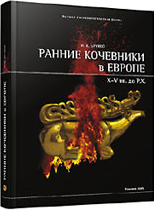 I. V. Bruyako "Early Nomads in Europe (10-5th cc. BC)"
I. V. Bruyako "Early Nomads in Europe (10-5th cc. BC)"
2005 year, 358 pages, ISBN 978-9975-9904-1-7
The book is dedicated to the study of the early stage of nomadic societies in Eurasia. The actual birth of nomadic civilization on the turn of Bronze and Iron Ages and its “Great March” to the west in early 1st millennium BC are considered on the wide historical and geographical background. The panorama of events discussed in this monograph develops on the territory from Central Asia in the East to Central Europe in the West. The main attention in the book is focused on reconstruction of some separate stages in consecutive settlement (military migration) of early nomads, known to ancient historical writers as “Cymmerians” and “Scythians”. Many peoples and civilizations of antiquity, other than the main actors, also played their role in this historical drama.
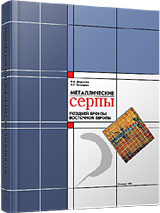 V. A. Dergachev, V. S. Bochkarev. "Metal Sickles of the Late Bronze Age in Eastern Europe"
V. A. Dergachev, V. S. Bochkarev. "Metal Sickles of the Late Bronze Age in Eastern Europe"
2002 year, 348 pages, ISBN 9975-9607-8-2
The book is also published in German translation in Munich. This monograph is a unique corpus of knowledge about one of the most important Bronze Age historical sources from Pannonia to Trans-Urals, i.e. agricultural tools. It contains a catalog of sickles, most of them earlier unpublished, and vast historical generalizations.